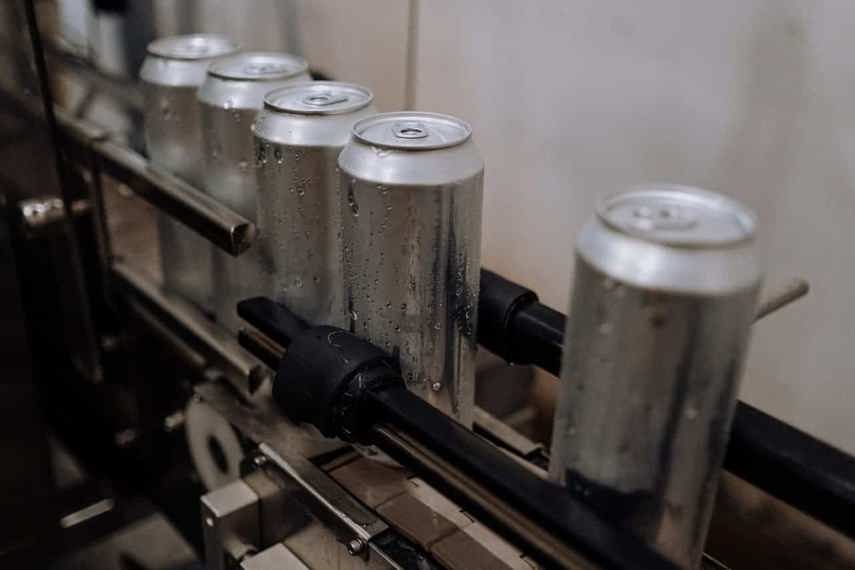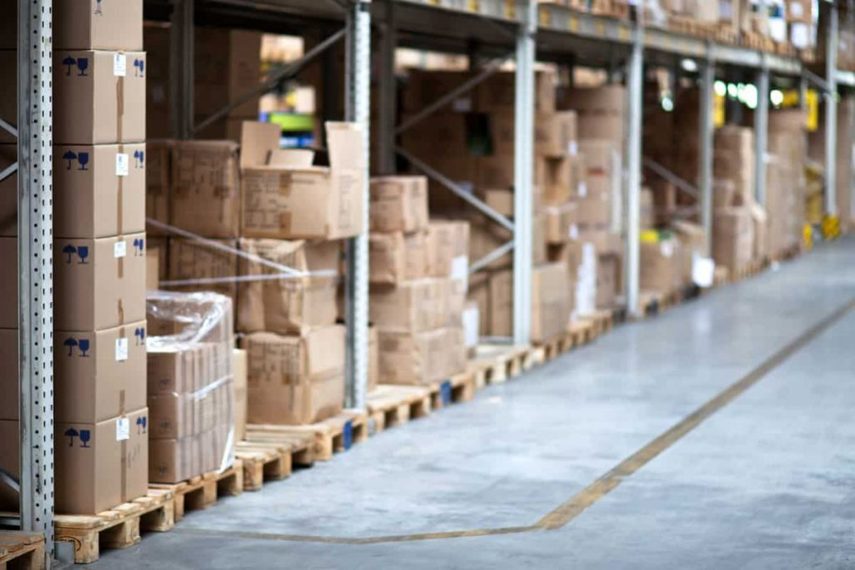
From what batch production is, to its advantages and disadvantages in the manufacturing process and which industries it suits best – here’s all you need to know about this popular method of product assembly (as well as how batch tracking helps improve outcomes for businesses).
What is batch production?
Batch production is manufacturing a product, or range of similar products, in batches, whereby the assembly is completed in a series of stages or steps. Sometimes known as a ‘batch and queue’, all of the items in a batch will go through the first part of the process, then wait in line for the next phase of production.
Batch production is a way of manufacturing that suits many different kinds of businesses and industries.
Batch production provides manufacturers with greater control over any number of elements that occur during the production of the items. Goods can be produced in large numbers but the assembly line allows for changes along the way. These changes create variations of an identical or similar commodity – the key difference over continuous and mass production. It also allows for quality control at various stages of the process, minimising the risk of waste.
 Batch production is common in the brewing industry.
Batch production is common in the brewing industry.
Batch production in manufacturing
Batch production offers a number of solutions for manufacturers, with the main one being the ability to produce lines of goods in smaller quantities, making their overall process a lot more agile and efficient. It may be that a product doesn’t need to be continually made (for a variety of reasons) or a business is able to scale up the production of something that had previously been only assembled through manual labour.
Typically, businesses use generalist equipment so it can be easily converted to meet different requirements. They’d also use it in conjunction with various batch tracking and control systems.
What types of businesses/products does batch tracking suit?
Batch production is appropriate for a wide variety of businesses and products, these range from pharmaceuticals, to clothing, chemicals and food-based products. As a rule of thumb, if a factory or machinery can produce multiple goods on the same set of equipment, you’d use batch production.
For example, a pharmaceutical company won’t need to manufacture cold and flu tablets or seasonal allergy medication all year round, so it can adjust its production of those goods for when there is increased demand. The same machinery can then be used to produce other medicine when required.
Bakeries also benefit from batch production as they are able to create many different baked goods using the same equipment (oven, mixing bowls and baking trays) and benefit from scaling production up or down depending on trends and demand forecasts.
So is there anything batch production is not suitable for? In short, yes. When compared with continuous production or mass production – where goods are repeatedly assembled without a break in between each step – it is difficult for batch production to compete with the volume of output. So when it comes to car assembly, a bottling plant or bike production line, there is just one continual assembly chain that can move along without the need for stopping at each stage.
Brands using batch production
Ikea is probably one of the most well-known global brands that use batch production. The Swedish flatpack furniture giant mass produces a large volume of goods in batches, and allows for flexibility to manufacture similar items across its range according to demand.
New Zealand’s home-grown chocolate makers Whittakers has always been well-known for its batch production credentials. Not only do they batch produce their chocolate, which is how they are able to create a variety of flavour combinations and introduce limited editions on a regular basis, they also batch roast their cocoa beans.
 Brands such as Ikea standardise their products with batch-produced components
Brands such as Ikea standardise their products with batch-produced components
Advantages of batch production
We’ve already touched on some advantages of batch production above but here are a few more in detail:
1. Smaller quantities of items produced
Batch production provides the opportunity for businesses to make a smaller quantity so there can be more varieties of goods available. It also means that items can be manufactured on request and decrease lead times in production.
2. Multi-use capabilities
There’s no doubt that being able to produce variants of items on the same assembly line is one of the key benefits of batch production. Equipment is used efficiently and is rarely underutilised as it could potentially accommodate any number of production processes. It also minimises the risk of concentrating on just one product, so businesses can be more agile in responding to supply and demand.
3. Lower cost
Because more products can be manufactured on the same production line, it spreads the manufacturing costs across the various commodities. If the machinery isn’t continually active, running costs can be reduced and maintenance can be scheduled for downtimes — instead of having to halt production altogether.
In some specialised factories, small businesses with niche products can share costs with other businesses.
4. Greater quality control
When you are able to check and test products at each stage of the manufacturing process, it allows for greater control over any issues or problems that may occur. So instead of faults being discovered at the end of a large assembly line when thousands of products have already been complete, they can be checked at each stage.
5. Waste reduction
Producing the correct number of goods required also helps to minimise waste overall.
 For the right business, batch production can help lower costs and drive efficiency from the warehouse to the sales room.
For the right business, batch production can help lower costs and drive efficiency from the warehouse to the sales room.
Disadvantages of batch production
Batch production certainly isn’t suitable for every business and industry. Here are the disadvantages of batch production:
1. Difficulty automating
Due to the variables required for batch production it can be more challenging to automate the system. That’s because the equipment and process method has to consider the different attributes for each product.
2. Potential for employee downtime
When there is a ‘pause’ for reset or other adjustments between stages of production, as well as numerous quality control checks and testing along the process, there may be increased employee downtime. Particularly if equipment or machinery needs to be cleaned – for example, with food manufacturing.
3. More costly than mass production
When compared to mass production, batch production can be more expensive because there are usually more stages to the manufacturing process. Initial outlays of batch production equipment and technology can also be costly, because it needs to be specifically designed to perform a range of functions.
4. Production can take longer
When goods are being produced in a series of steps, and they are not able to move onto the next stage until every item in the batch is ready, the overall manufacturing process can take longer. This is especially true if alterations to machinery need to be made before production can continue, or if there is a delay in having the next phase ready.
What is a batch tracking system?
Batch production efficiencies can be greatly increased if used in conjunction with batch tracking software. And there are a number of reasons for that:
- Traceability will be easier and more time-efficient, particularly when it comes to raw materials and tracking them to the sale of the finished product
- You can manage materials better with greater visibility of stock, and you can prioritise using the oldest stock first, reducing the risk of costly waste — crucial for perishable consumables
- Compliance is key especially when it comes to health-related, pharmaceutical and food products. If you need to carry out a health and safety recall, you can do so with the right technology and software in place
Who needs a batch tracking system?
The short answer is any product business.
The long answer is that any product-based business that has raw materials and components coming from suppliers and products going to consumers needs to be able to track and trace their stock. Tracking raw materials from suppliers allows you to have greater control over quality assurance and means any health or safety issues that arise from goods you produce can be dealt with in an efficient, streamlined manner.
How to use batch management in manufacturing
There’s no question that managing raw materials, inventory and finished products is simplified with a batch management system. So how do you use one in your business?
1. Create batch numbers
How this is done will vary between businesses, but being able to give each batch produced a unique and traceable batch number provides transparency across the production line, end-to-end.
2. Connect your technology
By implementing the right batch tracking technology, you can also link it to your machinery and equipment via the internet. The result? More visibility of every stage and aspect of your business than you probably thought possible, as well as the opportunity to benefit from machine learning capabilities.
3. From raw materials to manufacture to sales
When you know how much is being sold and the stock on hand, you can ensure that you have the right inventory in the business to continue with production at the right time – not when you have completely run out or don’t have the correct raw materials available to even begin manufacture.
4. Production scheduling
When you know how sales are going, you can understand when it is the best time to commence production of a certain product or range of goods. And by being able to automate schedules, you can also let the software do the work for you, forecasting demand and responding to changes in priorities.
- Interested in production scheduling? Find out more about the BEST production scheduling software
Batch tracking in inventory software
See how batch tracking works within the Unleashed inventory management system in this short training video:
More posts like this
- Batch Production: Definition, Pros & Cons, Methods & Examples - From what batch production is, to its advantages and disadvantages in the manufacturing process and which industries it suits best – here’s all yo...
- Brandini Toffee Minimizes Food Risk & Maximizes Performance with Unleashed - When a surge in production demanded a more efficient approach to managing and tracking stock, California-based food manufacturer, Brandini Toffee, dec...
- Lot numbers explained - All you need to know about lot numbers - We see lot numbers applied to many of the products we use in everyday life, from toiletries and medicines to food products, drinks, and cars. Differen...
